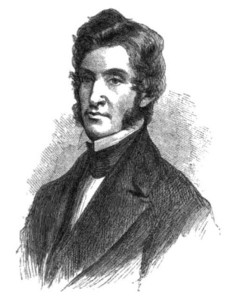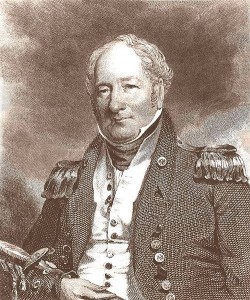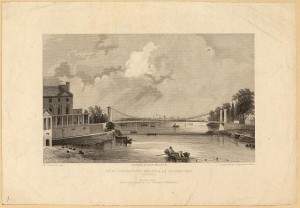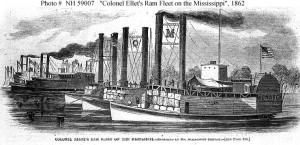From The New-York Times October 18, 1861:
Defences of New-York.
The following letter, written by a Civil Engineer, of high professional reputation, over a month ago, has special interest at the present moment, in view of the circular to the Governors of the States, which we published yesterday:
GEORGETOWN, D.C., Sept. 14, 1861.
His Excellency, E.D. Morgan, Governor of New-York:
SIR: Permit me to make a suggestion to you touching the defences of New-York.
Should we rely on shot and shell to protect a great city against modern war-steamers, iron-plated, and constructed, after ample experiments, in the confident belief that they are shot and shell proof?
For my part, I think it would be imprudent, in case of a war with any great naval power, to allow the safety of New-York to depend at all on mere artillery. Something more certain and reliable will assuredly be needed.
For more than six years I have earnestly endeavored to induce the Navy Department to investigate the proposition to introduce steam-rams — powerful steam vessels, so constructed that they may be driven against the hull of a ship-of-war and sink her by the force of the collision — as an auxiliary, and, indeed, in my opinion, the only effective means of harbor defence.
The suggestion has hitherto received but little encouragement from the Department, but since the publication and distribution of my views to Congress, the plan has been extensively adopted, both by the French and British Governments, where huge rams are now in course of construction in the National Navy-yards, and under contracts with private builders.
This suggestion did not originate with me, but was submitted to Congress by Commodore BARRON in 1832, and since that period, has been urged by several other officers of the United States Navy.
I may add, that the rebel Government is now preparing one or more rams in Mobile and New-Orleans, and I very much fear that we shall presently have a new and costly illustration of the efficacy of the plan, in the loss of some of our blockading vessels.
If you cannot defend New-York by shot and shell, you can certainly defend it by a few powerful rams, and I therefore earnestly suggest the subject to your attention, at least as an auxiliary protection; and am, Sir. very respectfully,
Your obedient servant,
CHARLES ELLET, JR., Civil Engineer.
It’s interesting that Ellet would mention Commodore James Barron as an endorser of rams for the navy. Although Barron was basically a career navy man, he was controversial and was court-martialed for his failure in the Chesapeake–Leopard Affair. Barron challenged Stephen Decatur to a duel with pistols in 1820. Barraon killed Decatur in the duel.
As a civil engineer Charles Ellet, Jr. was known for his work on suspension bridges:
In 1842, he designed and built the first major wire-cable suspension bridge in the United States, spanning 358 feet over the Schuylkill River at Fairmount, Philadelphia, Pennsylvania. He designed the record-breaking Wheeling suspension bridge over the Ohio River at Wheeling, West Virginia in 1848, and a 770-foot suspension footbridge at Niagara Falls at the same time.
Ellet actually started working on rams for the federal government. “In March 1861, the Secretary of War Edwin M. Stanton appointed him colonel of engineers and tasked him with developing the United States Ram Fleet.”
Ellet would die from wounds received during the Battle of Memphis on June 6, 1862.





Pingback: Shanghaied at the Falls? | Blue Gray Review